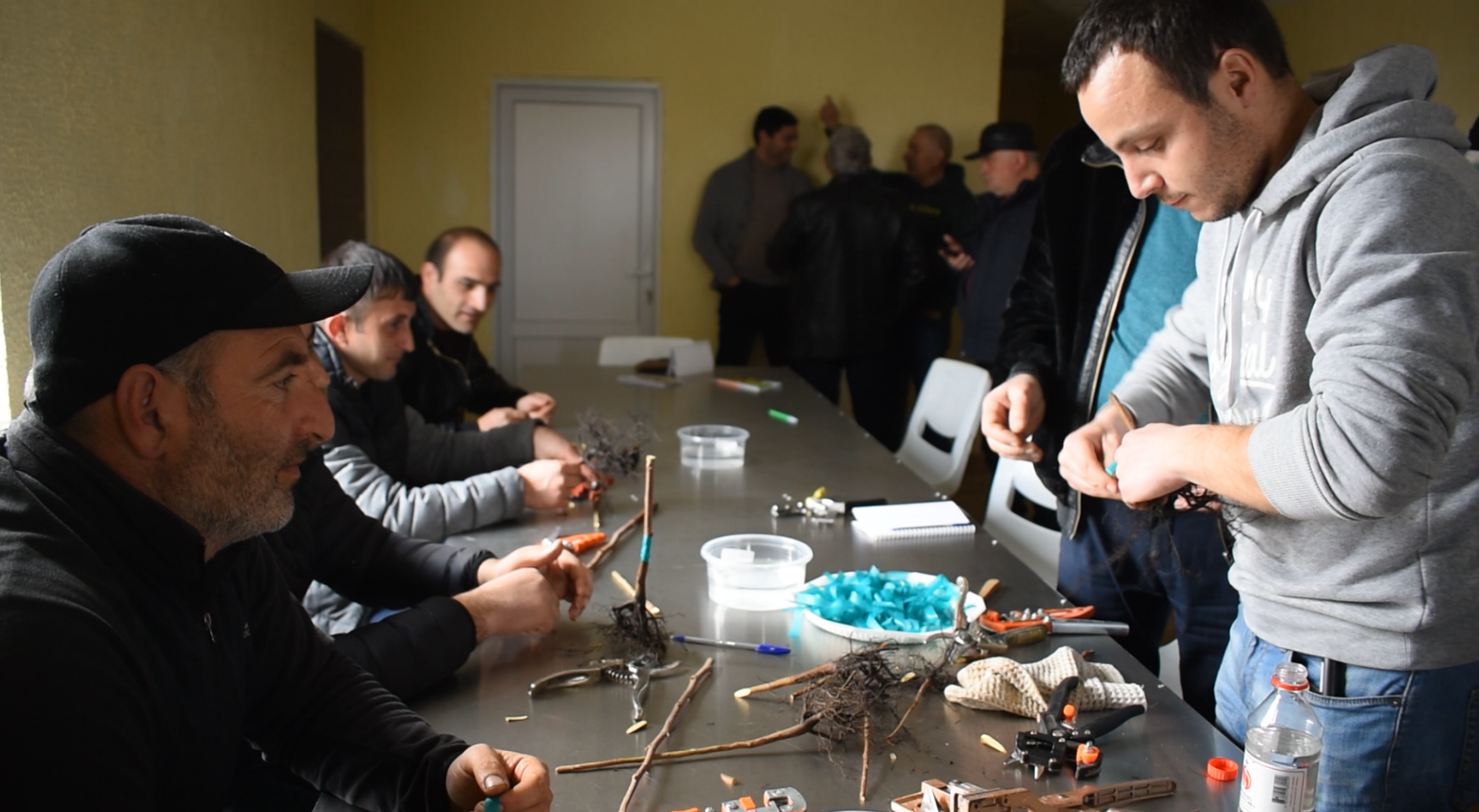
ATP’s tree nurseries not only produce seedlings for ATP’s nation-wide planting programs, but also serve as centers where the necessary technical knowledge and skills to improve the overall propagation and quality of trees produced in Armenia are provided to both experienced and new agriculturalists.
A central training location is Karin Nursery in the Aragatsotn province, where ATP hosts dozens of Agrarian University students and professionals each year. Here, students have the opportunity to close the gap between theory and practice.
Most recently a group of farmers from the Tavush province visited Karin Nursery to experience winter fruit tree grafting, a practice that is not common in Armenia due to the lack of facilities and proper equipment.
In 2020, the Bilezikian Grafting Facility was added to the Karin nursery complex. The facility led to significant advancements in ATP’s methods of fruit tree propagation and also contributed to the country’s overall knowledge, as such facilities are few. Visits to the facility are tailored to specific areas of interest. During the Tavush farmers’ visit, learning about winter grafting of persimmon and pear trees species was important, as the farmers specialized in the cultivation of these species in their hometowns. The group visit was organized by CARD Foundation within the framework of the “Rural economic development-New Economic opportunities” program, financed by USAID Armenia. The main goal of the program is to make high-quality services and inputs available to fruit growers.
“Coming here and seeing this place, you realize that no matter how much you already know you can still learn more ,” says Seroj Mirzoyan, a visiting farmer who has spent his entire life growing vegetables and fruit trees in the village of Aknaghbyur.
ATP’s nursery staff, who have spent the past 26 years mastering the art of tree propagation, agree. With a changing global climate, innovation in agriculture and approaches to knowledge exchange and learning are rapidly evolving. Everybody involved in farming, advising, research, training and education is facing a number of challenges in order to adjust.
“It’s my first time seeing a nursery of this kind, with such high standards,” says Sergey Galstyan, another one of the visiting farmers from Tavush. “There are species we’ve searched for throughout the years and haven’t found. As it turned out today, they were under our noses all along, and we were trying to acquire them from abroad somehow, but these people have already made that possible. This is a very serious operation. I’m very impressed.”
Among the many species available, ATP is also propagating dwarf tree species, which are in high demand among farmers, because of the advantages they offer over regular fruit trees. In addition to helping reforestation efforts in Armenia, ATP is adding to its catalogue of trees to support the Armenian farmer.
Experts agree Armenia’s current nursery capacity and trained specialists are insufficient for meeting its goals of doubling the forest cover by 2050, for which an estimated 500 million seedlings are needed. In response to that, ATP and the National Agrarian University partnered up to address this capacity building issue. Students from the university participate in internships and field research at ATP’s nurseries and greenhouses.
After a visit to Karin Nursery for grafting practice, Slava Nazaryan, a student from the Armenian National Agrarian University, said, “One of the things that caught my attention was that each rootstock was washed carefully and disinfected in manganese solution before being grafted and stored. This is a very important factor, which is often overlooked by nursery owners.”
“Our tree propagation and planting formula has proven to be successful with a higher than average survival rate,” said ATP operations manager Arthur Harutyunyan. “We mean to share our knowledge and spread awareness about national as well as international best practices that can be adapted in Armenia to ensure that trees are planted thoughtfully, with careful consideration of several factors and the long-term in mind,” he continued.
ATP propagates nearly 55 different species of endemic and adapted trees, using a mix of the latest technologies and traditional local practices. Its nurseries are enriched with greenhouses, different drip irrigation systems, protective netting and more. The fields are laid out according to carefully designed plot maps, created with the best outcome of tree quality in mind.


Be the first to comment